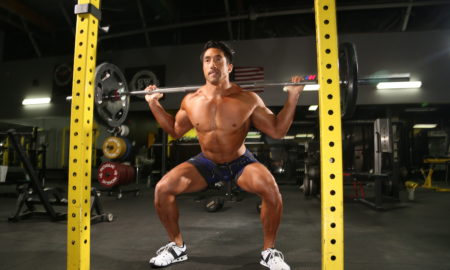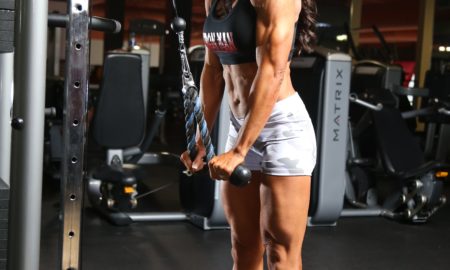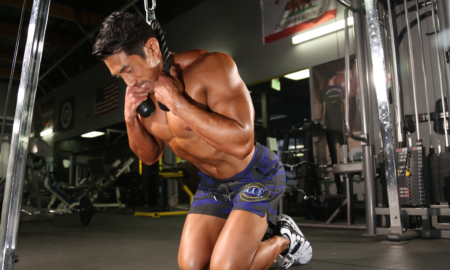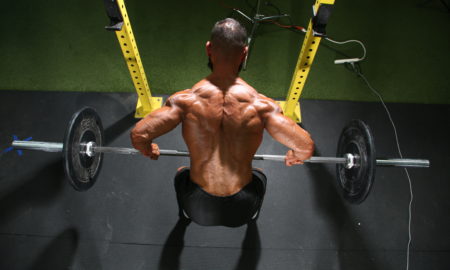There are still myths surrounding so-called healthful exercises for the knees. Fortunately, the myths aren’t as strong as they used to be. Many gym veterans will recall how doctors and other health-care providers maligned squats for decades. Squats were supposed to be bad for the knees. Leg extensions were supposed to be good for the knees. That led to the use of leg extension machines for rehabilitating knee injuries, and trainees in popular gyms knocked out set after set of heavy leg extensions. Olympic weightlifters, powerlifters, track and field athletes, football players and hardcore trainees, however, knew that wasn’t true and kept performing squats with very few problems.
The health-care professionals who recommended leg extensions and squats were overwhelmingly untrained individuals who didn’t have any scientific evidence to support their ideas. It would be very difficult to push ideas like that today.
When you perform a leg extension, the major lower-leg bone, the tibia, slides forward. That stretches an important ligament in the knee, the anterior cruciate ligament, or ACL. We can only wonder how many athletes were told to perform leg extensions during rehab without any idea that it might be bad for their injured ligament. Various rehab leg extension machines were isokinetic, so they allowed only concentric, or positive, knee extension, or flexion. They often had the athlete perform leg or knee extensions at maximum speed and force. Eventually, people recognized the need for an anti-shear device to reduce the stress on the ACL.
Biomechanics research on the knee has demonstrated that during the squat and leg press, the tibia slides backward. That reduces the stress on the ACL.
Another problem with the leg extension is that it maximally stresses the cartilage on the back of the patella, a.k.a. kneecap, at its thinnest area. The cartilage is not uniform in thickness. It’s thinnest at the top and bottom of the patella and thickest near the middle. Maximal pressure at the thinnest part of the cartilage can damage or crack it.
Squats are often called “physiologic flexion” by biomechanists. When you perform a squat, the maximal stress lines up with the thickest area of cartilage on the patella. Human beings were clearly designed to do that.
Much research is taking place that involves training in one way or another. At one time there was very little research, and what there was was mostly conducted by doctors who didn’t like strength training. Now, at last, the research has evolved. The Journal of Strength and Conditioning Research was accepted into Medline a few years ago. Other journals and researchers have explored training and clinical problems. I’ve quoted Frank G. Shellock, Ph.D., in this column before. Shellock has published more than 200 papers, has a doctorate in physiology, is a fellow of the American College of Sports Medicine and has competed as a powerlifter.
Shellock and his co-researchers investigated leg extensions and one-leg squats in patients who had previously suffered dislocated patellas. During leg extensions, patellar displacement was more pronounced than during one-leg squats. Furthermore, the researchers found that during leg extensions, the patella rotated on the femur—thigh bone—while the one-leg squat could be characterized as the femur rotating underneath the patella. That difference may account for the problems with leg extensions.
If you like to perform a set or two of very light leg extensions as part of your warmup on leg day, it’s not a problem. You don’t use enough weight to damage the cartilage. Perform them gently. I don’t advise that you add more weight or more sets or that you perform them explosively. IM
Powers, C.M., Shellock, F.G., et al. (2003). Patellofemoral kinematics during weight-bearing and non-weight-bearing knee extension in persons with lateral subluxation of the patella: a preliminary study. J Orthop Sports Phys Ther. 33(11):677-85.
Editor’s note: Visit www.SoftTissueCenter.com for reprints of Horrigan’s Sportsmedicine columns that have appeared in IRON MAN. You can order the books, Strength, Conditioning and Injury Prevention for Hockey by Joseph Horrigan, D.C., and E.J. “Doc” Kreis, D.A., and the 7-Minute Rotator Cuff Solution by Horrigan and Jerry Robinson from Home Gym Warehouse, (800) 447-0008 or at www.Home-Gym.com.




















You must be logged in to post a comment Login